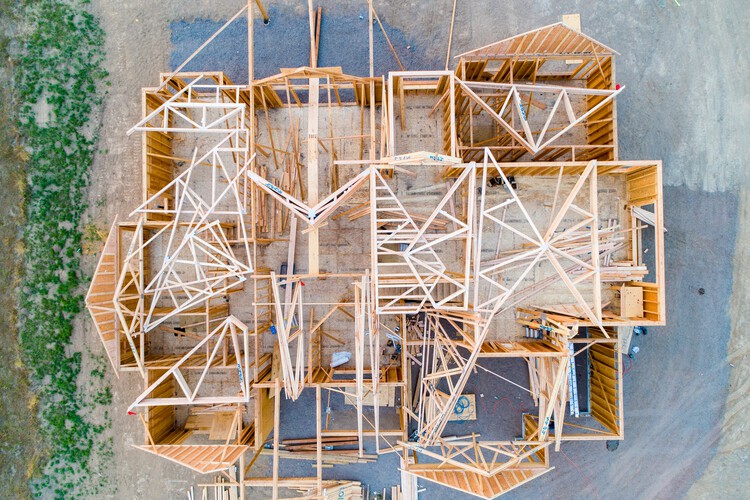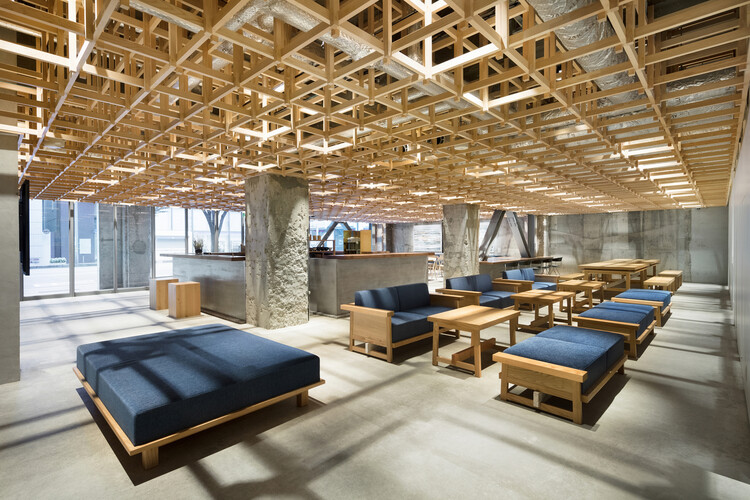One of the first elements used by humans to build shelters, wood is a versatile material that, along with technological advances, remains a protagonist in the construction industry, being used in different ways and moments in a work.
In the history of mankind, wood was first used in combination with animal skins and rocks to build shelters to protect people from the weather and predators. The knowledge of these techniques dates back to the beginning of humanity and has been improved over time and with the advancement of technology, always linked to a specific geographic space. Just as the use of wood depends on both the climate and the species available locally, technological advances have also been developed locally.
In places with a colder climate, the use of timber as the main structure is historically more common, due to its thermal inertia that helps to keep the heat inside. There are also some ancient practices of timber cutting and jointing practiced in places like Japan, which bring strength to the structure from ancestral knowledge. The use of timber as the main structure of the construction industry, however, lost priority as steel and reinforced concrete practices advanced after the Industrial Revolution.

Currently, timber has applications in all stages of the construction, being used in structural support, secondary structures and permanent constructive elements. This diversity of use is also reflected in the form of the raw material: timber can be found natural (round), cut and straightened into structural pieces, molded for specific purposes, such as the frames and even in planks for finishing floors, walls and furniture.
Temporary Structures
Many stages of the construction use timber as temporary or secondary structures, which serve as support for the development of a service, such as the templates in the marking of the first points of the work, the shoring of a structure, or even as a formwork for pillars, beams or slabs. In these cases, wooden pieces are usually cut into standardized sizes, such as battens and boards, and nailed. There are also cases of long-term temporary structures, such as fences and guardrails that provide security for the construction.
Permanent Structure
Timber is used as the main structure, both in its natural form, with massive trunks, as well as in the form of frames and self-supporting wooden panels. Despite being less used nowadays, wooden structures have had great technological advances in recent years, with new materials such as glued laminates that have managed to structure increasingly taller buildings, representing an interesting possibility of a constructive system for the future. In addition to being applied as a general structure, timber can also be used as a permanent structure that complements the building, as is the case of a wooden staircase, or even the roof structure.

Building Elements
With the accumulation of techniques for handling this material, timber is widely used for specific elements of construction, such as window frames, shading elements or furniture. Whether windows, doors or gates, internal or external, it is in the frames that the use of timber is most seen, being a material divided and molded to produce door frames and leaves of different patterns.
Finishing
Timber as a finish can be used to cover internal or external walls, or as a floor, in the form of solid pieces or integrated with laminates. It can also be applied as a lining in environments in the form of fitted parts. To act as a finish, the timber must be properly treated both against the weather, if left outside the construction, and against possible pests like termites.
Present in almost all phases and parts of a work, timber is one of the most versatile materials in civil construction. In addition, it is also one of the most accessible materials, either for its cost or for the material handling techniques, which can be learned quickly. With the impact that materials such as cement and steel have on the environment, new technologies involving timber have been the great bet of civil construction in recent years. Based on advances in its production processes, timber has the potential to retake its role as a more sustainable alternative for construction material.
Source: Arch Daily
